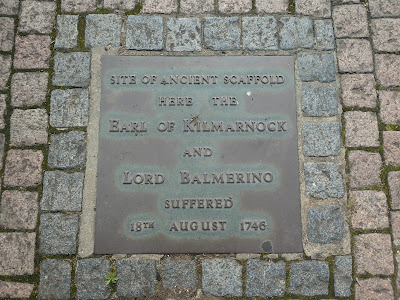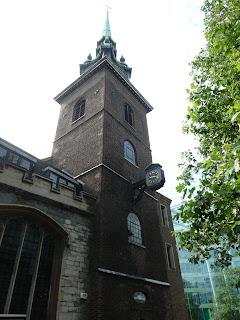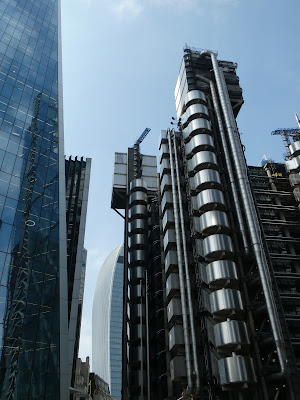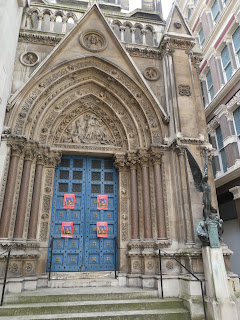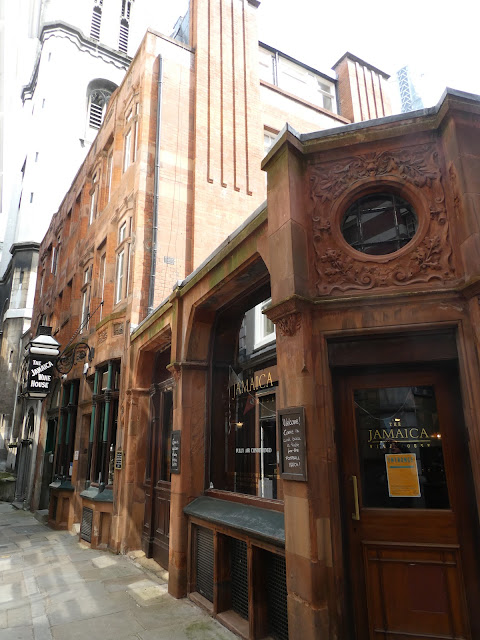While many parts of London have a long history of course none can match the City. And there is just so much packed into the winding roads of the City that one cannot easily do it justice in one walk, even though the area is so small. Hence this walk just covered the eastern side (with a lunch break of sushi with my mate Thibault).
Here I started almost at the beginning with a chunk of the old City Wall. While the upper reaches are medieval, the lower courses are Roman and so date back to the 2nd century. If you look down and see the courses with thin red tiles in them, that is a trademark of Roman walls. The Roman wall ran for over 2 miles enclosing 330 acres. This is the best preserved chunk left, and you need to know where to look for it as it is hidden at the back of a hotel around the corner from Tower Hill tube station.
This is the Mercantile Marine Memorial designed by Lutyens in Trinity Square Gardens, remembering all the seamen who lost their lives in the First World War, with an extension in front of it the larger numbers lost in the Second World War.
There are memorials too to earlier deaths - those who lost their lives to the executioner, mostly for acts of treason.
St Olaves Hart Street was one of the few churches to survive the Great Fire. It was dedicated to Norway's patron saint, King Olav.
St Botolph Without Bishopsgate
The dominant feature around here is the Gherkin, although it is not the tallest skyscraper, but it is the most shapely.
Underneath it is St Helen's Bishopsgate, the slightly odd double nave shape is because there was a nunnery here right next to the parish church. Following the Dissolution they were knocked together.
The skyscrapers around here are quite extraordinary . Cannot easily convey just how huge they are
This is probably the least remarkable of all the shops and bars here, but its claim to fame is it was used in the filming of Harry Potter
A water pump marking the site of an old prison. (It has recently been repainted having previously been blue)
Lombard Street, London's original banking centre and named after the Italian Lombard merchants who filled the void after England expelled the Jewish money lenders. Labour's commercial anti-semitism isn't new either. (The mercahnts worked on benches - "banco" in Italian, hence the term "bank".)
St Stephen Walbrook, a church rebuilt by Christopher Wren after the Great Fire. The dome could be seen as a prototype for St Paul's. Beautiful interior too.
In this alcove is the London Stone. Not clear what is special about this, although one theory is it was used by the Romans as a measuring point for official distances to other places in Britannia
St Mary Abchurch, also by Wren
The Monument
This inscription is fascinating for many reasons. Note for example the reference to Charles I as Charles the Martyr
Old Billingsgate fish market
The Custom House
St Mary at Hill Street, another Wren church
And finally the very atmospheric ruins of St Dunstan in the East, destroyed in the Blitz and not rebuilt, but turned into a city garden.

















